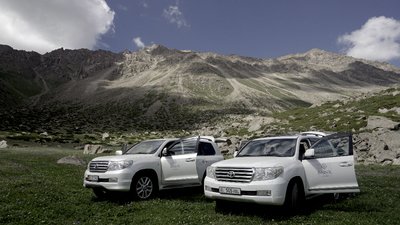Koshoi-Korgon hillfort
Our tours passing through Koshoi-Korgon hillfort
Baibol services
If during the trip you plan to visit the legendary Son-Köhl lake in the Naryn region, we recommend you to visit the unique landmark - the ruins of the ancient fortress of Koshoi-Korgon. The remains of the ancient settlement are raised on a deserted mountain plateau among the majestic Tien Shan mountains at an altitude of 3 thousand meters above sea level.
Koshoi - Korgon in translation means "the fortress of Koshoy." According to legend, the fortress was erected and named after the uncle and at the same time the ally-commander of the famous epic of Kyrgyz hero Manas. The fortification militaire served as defedence from the invasion of enemies from China.
According to historical information at the beginning of the 12th century, Koshoi-Korgon was the capital of one of the destinies of the Karakhanid Khaganate - one of the most powerful states of the Central Tien Shan, which unified countless Turkic tribes.
The At-Bash city-fortress (the ancient name of the ancient settlement of Koshoi-Corgon) served for several purposes: it was a military garrison to protect the population from enemies and predators, it was the trans-shipment base on the Great Silk Road - the famous trade artery, connecting the east and west.
The first researcher who mentioned the fortress was the Kazakh scientist Chokan Valikhanov. In 1859, returning from the expedition, he met the local residents who told him about the Tash-Rabat caravan-shed where were the ruins of an ancient settlement, people formed the legends about that settlement. For the first time archeological excavations of the ancient settlement began in the 30s, then periodically renewed and stopped until the collapse of the former USSR.
According to archaeologists in ancient times, Koshoi-Korgon had the shape of a rectangle 245 by 250 meters and was fenced off by a giant moat. In addition, the fortress was fortified with 50 towers and hosted a whole army. The walls of the powerful structure, which once reached 7 meters in with and 10 meters in height, are now almost half buried underground. But despite this, the ruins of the fortress have an amazing view. In 2004 in this place were opened the museum of artefacts.











